- Home
- Philip Pullman
Fairy Tales from the Brothers Grimm Page 10
Fairy Tales from the Brothers Grimm Read online
Page 10
And we must reach the other side.’
The little duck swam up to them, and Hansel climbed on her back.
‘Come on, Gretel!’ he said. ‘Climb on with me!’
‘No,’ said Gretel, ‘that would be too much of a cargo. We should go one at a time.’
So the good little bird took them one after the other. When they were safely ashore again they walked on further, and soon the forest began to grow more familiar. At last they saw their own home in the distance, and they ran up and rushed inside and threw themselves into their father’s arms.
The man hadn’t had one happy moment since he’d left his children in the forest. Not long after that, his wife had died, and he was all alone, and poorer than ever. But now Gretel unfolded her little apron and shook out all the jewels so that they bounced and scattered all over the room, and Hansel threw handful after handful after them.
So all their troubles were over, and they lived happily ever after.
The mouse has run,
My tale is done –
And if you catch it, you can make yourself a great big furry hat.
***
Tale type: ATU 327, ‘Hansel and Gretel’
Source: story told to the Grimm brothers by the Wild family
Similar stories: Alexander Afanasyev: ‘Baba Yaga and the Brave Youth’ (Russian Fairy Tales); Giambattista Basile: ‘Ninnillo and Nennella’ (The Great Fairy Tale Tradition, ed. Jack Zipes); Italo Calvino: ‘Chick’, ‘The Garden Witch’ (Italian Folktales); Charles Perrault: ‘Little Thumbling’ (Perrault’s Complete Fairy Tales)
The best-known tales, of which this is certainly one, have lived on in countless anthologies and picture-books and theatrical adaptations (and, in this case, opera) until familiarity threatens to dull their fine qualities. But this is a great and ferocious classic. The wonderful invention of the edible house, together with the implacable cruelty of the witch and the wit and bravery of Gretel in dealing with her so neatly, make it unforgettable.
Mother, or stepmother? In the Grimms’ first edition, of 1812, the woman is simply ‘the mother’. By the time of the seventh edition of 1857 she had become a stepmother, and so she remains. Marina Warner, in From the Beast to the Blonde, is very interesting on the Grimms’ reasons for this (the only way they could preserve an ideal vision of the Mother was to banish and replace her) and also on Bruno Bettelheim’s Freudian interpretation (the mother/stepmother split allows the listening children to deal guiltlessly with their anger at their own mother’s threatening side). From the storytelling point of view, I go for simplicity.
Jack Zipes, in Why Fairy Tales Stick, points out that underlying this tale, which to many seems a matter of pure fancy, is the unhappy reality of rural poverty and the prospect of real starvation for many families. Desperate times, desperate remedies, no doubt, but shouldn’t the story condemn the father a little more? And the death of the stepmother is very convenient, especially given the association of stepmother and witch that many modern storytellers have built on (including myself). It would have been a sorry ending for the children to come home and find her still ruling the roost. Perhaps the father killed her. If I were writing this tale as a novel, he would have done.
The episode of the duck is a curious little intervention in the story from the Grimms’ final edition. It didn’t exist before that, at least in print, but I think it works, so I’ve included it too. The lake is an impassable barrier between the threatening forest and the safety of home, and a barrier is a desirable thing to have unless you’re on the wrong side of it; but it can be crossed with a combination of the benevolence of nature and human ingenuity.
TEN
THE THREE SNAKE LEAVES
Once there was a poor man who couldn’t support his only son any more. When the son realized this, he said, ‘Father, it’s no use my staying here. I’m just a burden to you. I’m going to leave home and see if I can earn a living.’
The father gave him his blessing, and they parted sorrowfully.
The king of a nearby country was a powerful ruler, and at that time he was waging war. The young man enlisted in his army and soon found himself at the front where a great battle was being fought. The bullets flew like hail, the danger was hideous, and his comrades were falling dead all around. When the general himself fell dead, the last of the troops were going to flee, but the young man took his place and yelled: ‘We won’t be defeated! Follow me, and God save the king!’
The men followed him as he led the charge, and they soon had the enemy on the run. When the king heard of the young man’s part in the victory, he promoted him to field marshal, gave him gold and treasure, and bestowed on him the highest honours in the kingdom.
Now the king had a daughter who was very beautiful, but she had one strange obsession. She had sworn an oath not to marry any man unless he promised to let himself be buried alive with her if she died first. ‘After all, if he really loves me,’ she said, ‘why would he want to go on living?’ And she said that she would do the same and be buried with him if he was the first to die.
This grim condition had put off many young men who would otherwise have begged to marry her, but the soldier was so struck by her beauty that nothing would discourage him. So he asked the king for her hand.
‘Do you know what you must promise?’ said the king.
‘If she dies before me, I must go to the grave with her,’ said the soldier. ‘But I love her so much that I’m willing to risk that.’
The king consented, and the wedding was celebrated with great splendour.
For a while they lived together happily, but one day the princess fell ill. Doctors came from all over the kingdom, but none of them could help her, and presently she died. And then the young soldier remembered the promise he’d had to make, and shuddered. There was no way of getting out of it, even if he’d wanted to break the promise, because the king was going to put sentries at the grave itself and all around the cemetery in case he tried to escape. When the day came for the princess to be buried, they carried her body to the royal vault, made sure the young man was inside, and the king personally locked and bolted the door.
They had put some provisions in there: on a table there were four candles, four loaves of bread and four bottles of wine. The soldier sat there beside the princess’s body day after day, taking only a mouthful of bread and a sip of wine, making them last as long as possible. When he’d taken the last sip but one and eaten the last mouthful but one, and when the last candle was down to its last inch, he knew that his time had nearly come.
But as he sat there in despair, he saw a snake crawl out of a corner of the vault and move towards the body. Thinking it intended to eat her, the young man drew his sword. ‘While I live, you shan’t touch her!’ he said, and struck the snake three times, cutting it to pieces.
Shortly afterwards, a second snake came crawling out of the corner. It came to the body of the first snake, and looked at it, piece by piece, and then crawled away again. Soon it came back, and this time it had three green leaves in its mouth. Carefully moving the first snake’s body together again, it laid a leaf on each of the wounds, and in a moment the dead snake stirred into life, the wounds closed up, and it was whole again. The two snakes hurried away together.
But the leaves were still lying where they’d left them, and the young man thought that if their miraculous power had brought the snake back to life, it might do the same for a human being. So he picked up the leaves and laid them on the dead princess’s white face, one on her mouth and the other two on her eyes.
And as soon as he did this, her blood began to stir. A healthy pink came into her cheeks, and she drew a breath and opened her eyes.
‘God in heaven!’ she said. ‘Where am I?’
‘You’re with me, my dear wife,’ said the soldier, and told her all that had happened. He gave her the very last mou
thful of bread and the very last sip of wine, and then they banged on the door and shouted so loudly that the sentries outside heard them and went running to the king.
The king came to the graveyard himself and personally unlocked and unbolted the door of the vault. The princess tumbled into his arms, he shook the young man’s hand, and everyone rejoiced at the miracle that had brought her back to life.
As for the snake leaves, the soldier was a careful man, and he told no one about how the princess had been revived. But he had an honest and reliable servant, so he gave this servant the three snake leaves to look after. ‘Take good care of them,’ he said, ‘and make sure you keep them with you wherever we go. You never know when we might need them again.’
Now after she was brought back to life, a change came over the princess. All the love she had for her husband drained away from her heart. She still pretended to love him, however, and when he suggested making a sea voyage to visit his old father, she agreed at once. ‘What a pleasure it’ll be to meet the noble father of my dearest husband!’ she said.
But once at sea she forgot the great devotion the young man had shown her, because she felt a lust growing in her for the captain of the ship. Nothing would satisfy her but to sleep with him, and soon they were lovers. One night in his arms she whispered, ‘Oh, if only my husband were dead! What a marriage we two would make!’
‘That is easily arranged,’ said the captain.
He took a length of cord and, with the princess at his side, crept into the cabin where the young man was sleeping. The princess held one end of the cord and the captain wound the other around her husband’s neck, and then they pulled so hard that, struggle as he might, he couldn’t fight them off, and soon they had strangled him.
The princess took her dead husband by the head and the captain took him by the feet, and they threw him over the ship’s rail. ‘Let’s go home now,’ said the princess. ‘I’ll tell my father that he died at sea, and I’ll sing your praises, and he’ll let us be married and you can inherit the kingdom.’
But the faithful servant had seen everything they’d done, and as soon as their backs were turned he untied a boat from the ship and rowed back in search of his master’s body. He soon found it, and after hauling it into the boat he untied the cord from around the young man’s neck and put the three snake leaves on his eyes and mouth, and he came back to life at once.
Then the two of them rowed with all their might. Day and night they rowed, stopping for nothing, and their boat flew over the waves so fast that they reached the shore a day before the ship, and went straight to the palace. The king was amazed to see them.
‘What’s happened?’ he said. ‘Where’s my daughter?’
They told him everything, and he was shocked to hear of his daughter’s treachery.
‘I can’t believe she’d do such a terrible thing!’ he said. ‘But the truth will soon come to light.’
And so it did. Very soon the ship arrived at the port, and on hearing of this the king made the young man and his servant wait in a hidden room, where they could listen to everything that was said.
The princess, dressed all in black, came sobbing to her father.
‘Why have you come back alone?’ he said. ‘Where’s your husband? And why are you wearing mourning?’
‘Oh, father dear,’ she said, ‘I’m inconsolable! My husband took ill with the yellow fever and died. The captain and I had to bury him at sea. If he hadn’t helped me, I don’t know what I would have done. But the captain’s such a good man – he looked after my dear husband when the fever was at its height, no matter what the danger. He can tell you all about it.’
‘Oh, your husband’s dead, is he?’ said the king. ‘Let’s see if I can bring him back to life.’
And he opened the door and invited the other two to come out.
When the princess saw the young man, she fell to the ground as if she’d been struck by lightning. She tried to say that her husband must have been hallucinating in his fever, that he must have fallen into a coma so deep they mistook it for death; but the servant produced the cord, and in the face of that evidence she had to admit her guilt.
‘Yes, we did it,’ she sobbed, ‘but please, father – show some mercy!’
‘Don’t speak to me of mercy,’ said the king. ‘Your husband was ready to die in the grave with you, and he gave you back your life, but you killed him in his sleep. You’ll get the punishment you deserve.’
And she and the captain were put on board a ship with holes drilled in the hull, and sent out over the stormy sea. Soon they sank with the ship, and were never seen again.
***
Tale type: ATU 612, ‘The Three Snake Leaves’
Source: stories told to the Grimm brothers by Johann Friedrich Krause and the von Haxthausen family
Similar stories: Italo Calvino: ‘The Captain and the General’, ‘The Lion’s Grass’ (Italian Folktales)
A vivid and intriguing tale, which falls into two halves, the first half being magic and the second romantic/realistic. The version in Grimm ties both halves together skilfully by means of the leaves in the title. I haven’t altered it apart from the business of the young man’s murder. In the original he’s just thrown over the side of the ship, but in the two similar tales in Calvino the hero is executed, by firing squad in the first case and on the gallows in the second, and is thus incontrovertibly dead before being brought back to life by means of the magic leaves. I thought that the young man in this story ought to be unmistakably and dramatically killed too, hence the strangling, which also allows the servant to prove the wife’s guilt by producing the cord.
But into how many pieces is the snake cut? This vital question seems to have foxed everyone, including the Grimms themselves. The text has unequivocally ‘und hieb sie in drei Stücke’ – ‘and cut it into three pieces’ – and David Luke, Ralph Mannheim and Jack Zipes all leave that as it is in their translations of the story. Yet to do that would only take two blows of the young man’s sword, and consequently there would be only two places to put the leaves, not three. We need to look at what’s essential, and what’s essential is the number three (the three leaves, the princess’s eyes and mouth, the classic fairy-tale ‘three’), so there need to be three places for the second snake to put the leaves, hence there need to be three blows of the sword, which would cut the snake not into three but into four. But to say that introduces the idea of four unhelpfully into the reader’s or listener’s mind. I think the best solution is what I’ve done above.
ELEVEN
THE FISHERMAN AND HIS WIFE
Once upon a time there were a fisherman and his wife who lived together in a shack that was so filthy it might as well have been a pisspot. Every day the fisherman went out to fish, and he fished and he fished. One day he sat there looking down into the clear water, and he sat, and he sat, and his line went all the way down to the bottom of the sea. And when he pulled it out, there was a great big flounder on the hook.
The flounder said, ‘Now look, fisherman – what about letting me live, eh? I’m no ordinary flounder. I’m an enchanted prince. What good would it do you to kill me? I wouldn’t taste nice at all. Put me back in the water, there’s a good fellow.’
‘Fair enough,’ said the fisherman. ‘Say no more. The word of a talking fish is good enough for me.’
And he put the flounder back in the water, and down it swam to the bottom, leaving a long trail of blood behind it.
Then the fisherman went back to his wife in their filthy shack.
‘Didn’t you catch anything today?’ she said.
‘Oh, yes,’ he said. ‘I caught a flounder. A great big ’un. But he told me he was an enchanted prince, so I let him go.’
‘Typical!’ said the wife. ‘Why didn’t you ask him for something?’
‘I dunno,’ said the fi
sherman. ‘What should I have asked for?’
‘Those enchanted princes can do anything,’ said the wife. ‘And look at this shack. It stinks, the rain comes in, the shelves keep falling off the walls; it’s a terrible place to live. Go back and call that flounder up and tell him we want a nice cottage, all clean and neat. Go on.’
The fisherman didn’t really feel like doing that, but on the other hand he knew what would happen if he didn’t do what his wife wanted, so back he went to the seashore. When he got there the water wasn’t clear any more, but dark green and murky yellow.
He stood on the shore and said:
‘Flounder, flounder, in the sea,
Listen up and come to me.
My wife, the lovely Ilsebill,
Has sent me here to do her will.’
The flounder came up and said, ‘Well, what does she want?’
‘Oh, there you are. Well, it’s not my idea, you understand, but what she says is I should have asked you to grant a wish. And she told me what to wish for. She says she’s tired of living in a shack like a pisspot, and she wants to live in a cottage.’
‘Go home,’ said the flounder. ‘She’s got her wish already.’
The fisherman went home, and there was his wife standing in front of a neat little cottage.
‘There!’ she said. ‘Isn’t that better?’
There was a little garden at the front, and a pretty little parlour, and a bedroom with a proper feather bed, and a kitchen, and a pantry. All the rooms were furnished beautifully and the tin bowls and the copper saucepans were polished so bright they sparkled. Outside at the back there was a little yard and a pond with chickens and ducks, and a garden with vegetables and fruit trees.
‘Well, what did I tell you?’ said the wife.
‘Oh, yes,’ said the fisherman. ‘This is very nice. We can live here all right.’
‘We’ll see,’ said his wife.
Then they had supper and went to bed.

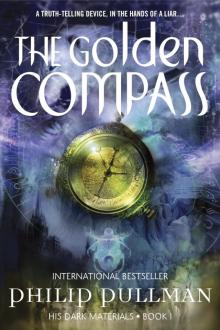 The Golden Compass
The Golden Compass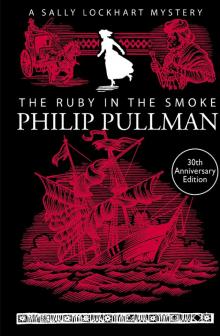 The Ruby in the Smoke
The Ruby in the Smoke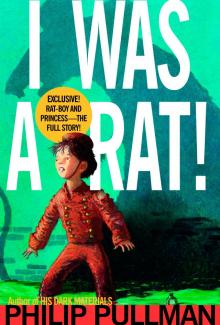 I Was a Rat!
I Was a Rat! Once Upon a Time in the North
Once Upon a Time in the North The Tiger in the Well
The Tiger in the Well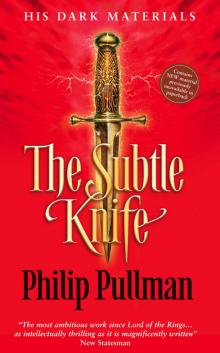 The Subtle Knife
The Subtle Knife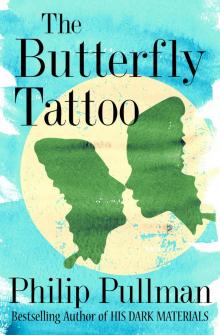 The Butterfly Tattoo
The Butterfly Tattoo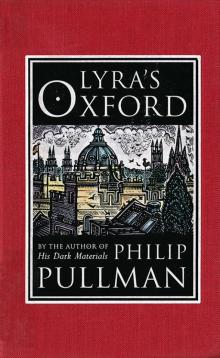 Lyra's Oxford
Lyra's Oxford The Broken Bridge
The Broken Bridge The Amber Spyglass
The Amber Spyglass Count Karlstein
Count Karlstein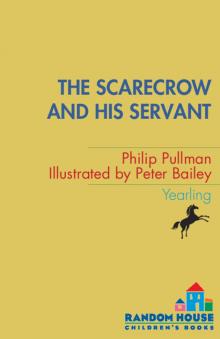 The Scarecrow and His Servant
The Scarecrow and His Servant The Shadow in the North
The Shadow in the North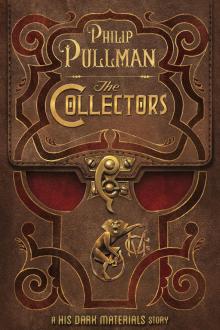 The Collectors
The Collectors The Good Man Jesus and the Scoundrel Christ
The Good Man Jesus and the Scoundrel Christ La Belle Sauvage
La Belle Sauvage The Tin Princess
The Tin Princess The Firework-Maker's Daughter
The Firework-Maker's Daughter The Book of Dust: The Secret Commonwealth (Book of Dust, Volume 2)
The Book of Dust: The Secret Commonwealth (Book of Dust, Volume 2) Serpentine
Serpentine Daemon Voices
Daemon Voices The Amber Spyglass: His Dark Materials
The Amber Spyglass: His Dark Materials The Amber Spyglass hdm-3
The Amber Spyglass hdm-3 The Haunted Storm
The Haunted Storm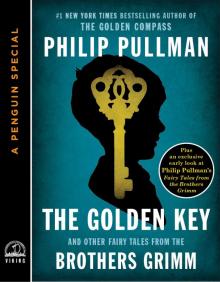 The Golden Key
The Golden Key His Dark Materials 01 - The Golden Compass
His Dark Materials 01 - The Golden Compass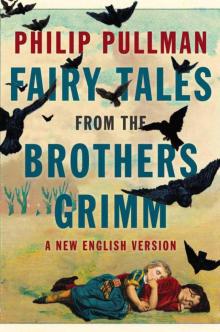 Fairy Tales from the Brothers Grimm: A New English Version
Fairy Tales from the Brothers Grimm: A New English Version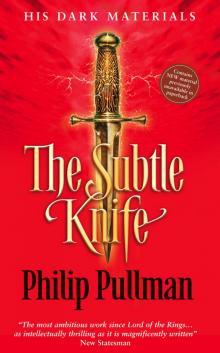 His Dark Materials 02 - The Subtle Knife
His Dark Materials 02 - The Subtle Knife Spring-Heeled Jack
Spring-Heeled Jack The Golden Compass hdm-1
The Golden Compass hdm-1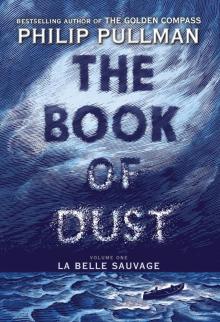 The Book of Dust, Volume 1
The Book of Dust, Volume 1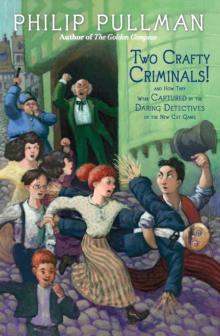 Two Crafty Criminals!
Two Crafty Criminals!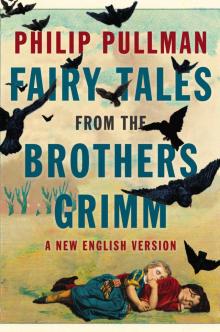 Fairy Tales from the Brothers Grimm
Fairy Tales from the Brothers Grimm The Subtle Knife: His Dark Materials
The Subtle Knife: His Dark Materials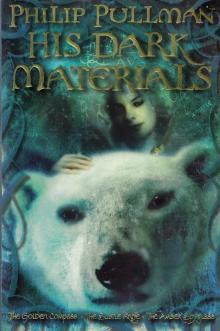 His Dark Materials Omnibus
His Dark Materials Omnibus The Golden Compass: His Dark Materials
The Golden Compass: His Dark Materials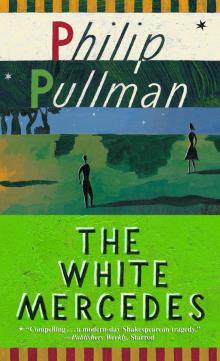 The White Mercedes
The White Mercedes